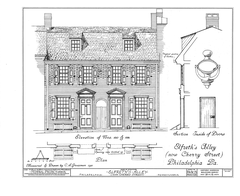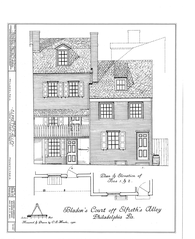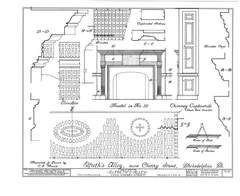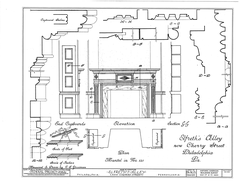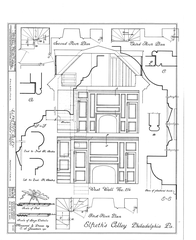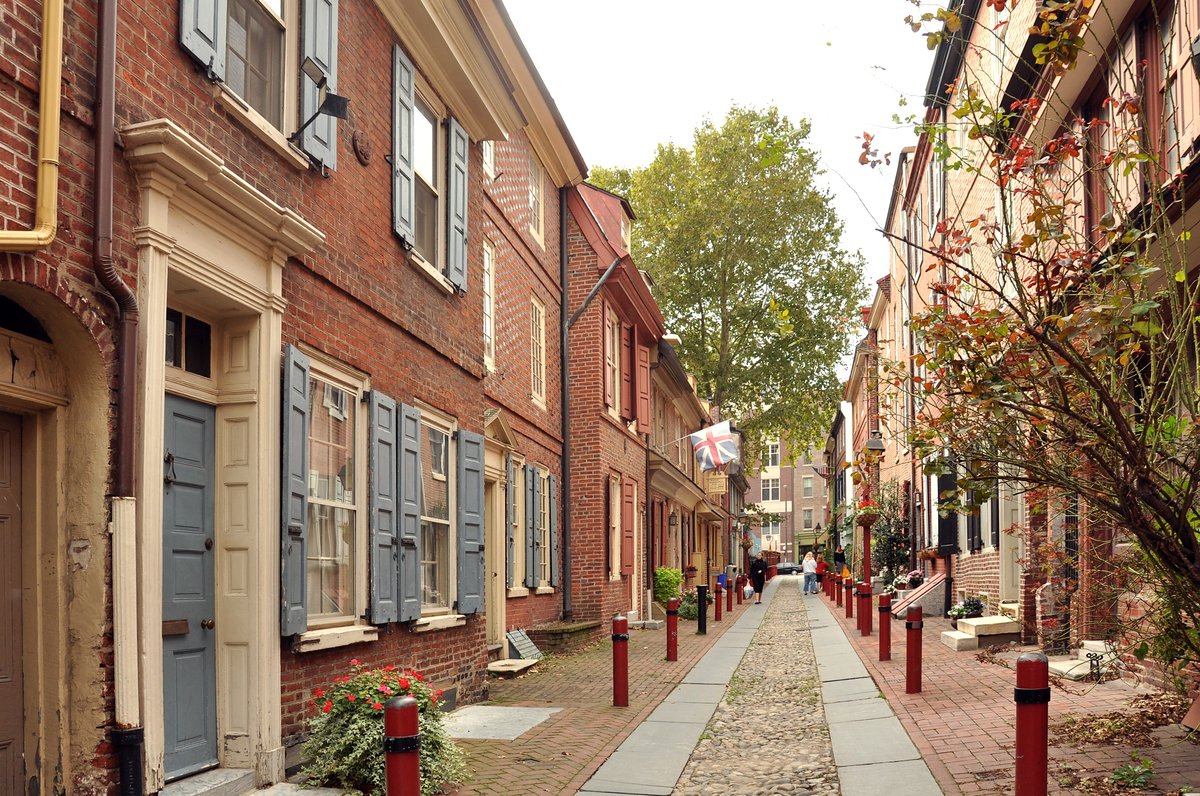
Visiting Elfreth’s Alley Museum: Hours, Tickets, and Historical Insights
Date: 18/07/2024
Introduction
Table of Contents
- Introduction
- Early Beginnings and Development
- A Community of Tradespeople
- Architectural Heritage and Preservation
- Elfreth’s Alley Today - A Window into the Past
- Visitor Information
- Frequently Asked Questions (FAQ)
- Significance of Elfreth’s Alley
- Conclusion
Early Beginnings and Development
Elfreth’s Alley emerged in 1702 as a cart path, providing tradespeople access to both the Delaware River waterfront and the city’s growing interior. Its strategic location quickly attracted artisans and merchants seeking a place to establish their businesses and homes. By the mid-18th century, the alley had transformed into a bustling hub of activity, lined with small houses and workshops.
A Community of Tradespeople
The alley’s residents represented a diverse cross-section of colonial Philadelphia’s working class. Blacksmiths, shipwrights, furniture makers, and glassblowers all contributed to the city’s burgeoning economy, their skills passed down through generations. This tradition of craftsmanship continued into the 19th century, with residents adapting to the changing times by taking on roles as laborers, seamstresses, and other trades.
Architectural Heritage and Preservation
The alley’s unique architecture reflects its long and storied past. The majority of the houses, constructed between 1728 and 1836, showcase a distinctive blend of Georgian and Federal styles. These narrow, two-story homes, built of brick and featuring dormer windows and sloping roofs, embody the simplicity and functionality that characterized early American architecture.
Recognizing the alley’s historical significance, residents in the 1930s initiated efforts to preserve its unique character. These efforts culminated in the formation of the Elfreth’s Alley Association in 1934, dedicated to protecting and interpreting the alley’s heritage. Their work ensured the alley’s survival, transforming it from a forgotten backwater into a cherished landmark.
Elfreth’s Alley Today - A Window into the Past
Today, Elfreth’s Alley stands as a National Historic Landmark, attracting visitors from around the world. The Elfreth’s Alley Museum, housed in two of the alley’s historic homes, offers a tangible connection to the past. Visitors can step back in time, exploring meticulously preserved interiors furnished to reflect different periods of the alley’s history. Exhibits showcase the lives of past residents, highlighting their occupations, daily routines, and contributions to Philadelphia’s growth.
Visitor Information
- Visiting Hours: The Elfreth’s Alley Museum is typically open from Wednesday to Sunday, 12:00 PM to 5:00 PM. It is recommended to check their official website for any changes in hours or special events.
- Tickets: Admission fees for the museum are usually around $10 for adults and $5 for children and seniors. Group rates and guided tours are also available.
- Travel Tips: Elfreth’s Alley is located in the Old City district of Philadelphia. Accessible by public transportation, it is a short walk from other historical sites such as Independence Hall and the Liberty Bell.
- Nearby Attractions: Visitors can explore nearby attractions like the Betsy Ross House, the Museum of the American Revolution, and Penn’s Landing.
- Guided Tours: Guided tours of Elfreth’s Alley provide deeper insights into its history and significance. Check the official website for tour schedules and availability.
- Photographic Spots: The picturesque cobblestone street and the historic homes offer great opportunities for photography. Please respect the privacy of current residents while taking pictures.
Frequently Asked Questions (FAQ)
Q: Is Elfreth’s Alley suitable for children?
A: Yes, Elfreth’s Alley is family-friendly and offers educational experiences for children.
Q: Can I visit Elfreth’s Alley without entering the museum?
A: Yes, the alley itself is open to the public, and you can walk through it at any time. However, the museum provides a richer historical context.
Q: Are there any special events held at Elfreth’s Alley?
A: Yes, Elfreth’s Alley hosts several events throughout the year, including holiday celebrations and historical reenactments. Check their official website for event details.
Significance of Elfreth’s Alley
Elfreth’s Alley holds immense significance on multiple levels:
-
Architectural Gem: It represents one of the oldest residential streets in the United States, showcasing remarkably preserved examples of early American architecture. The alley’s unique scale and character offer a stark contrast to the modern cityscape, providing a tangible link to Philadelphia’s colonial past.
-
Social History: The alley serves as a microcosm of working-class life in early America, illustrating the lives, trades, and social structures of ordinary Philadelphians. It provides valuable insights into the challenges and triumphs faced by these early urban dwellers.
-
Preservation Success Story: Elfreth’s Alley stands as a testament to the power of community-driven preservation efforts. The dedication of residents in saving the alley from demolition serves as an inspiration for similar initiatives across the country.
-
Cultural Icon: Elfreth’s Alley has transcended its physical boundaries to become a symbol of Philadelphia’s history and resilience. It features prominently in popular culture, appearing in films, literature, and artwork, further solidifying its place in the city’s identity.
Conclusion
Elfreth’s Alley offers a unique and immersive historical experience, allowing visitors to connect with the past on a personal level. It serves as a reminder of the ingenuity, perseverance, and community spirit that shaped Philadelphia and the nation. A visit to this remarkable site provides not just a history lesson, but a journey through time, offering a glimpse into the lives of those who came before us and the legacy they left behind.
Call to Action
Plan your visit to Elfreth’s Alley today! Check out their official website for more information on tickets, visiting hours, and special events. Don’t forget to explore other historical sites in Philadelphia and share your experience on social media!

